The science of secrecy has determined the fate of empires, the outcome of wars and will shape our future. Cryptography, the study of codes and ciphers, is at the heart of secrecy and has shaped history almost since the beginning of written communication.
“Cracking a difficult cipher is akin to climbing a sheer cliff face. The cryptanalyst is seeking any nook or cranny which could provide the slightest purchase.”
The Code Book reveals the intriguing world of secrets, in which the very nature of the field has often obscured the achievements of cryptanalysts and codebreakers until long after the standard history is written.
Along with a detailed history, the book also provides an explanation of cryptography and codes through the ages and which techniques are used to break different types of codes and ciphers.
Which means that I know how to break your code.
Why is this on our bookshelf?
In middle school, I had a teacher who threatened that if he caught anyone passing notes, he would photocopy the note and display it on the overhead projector. I promptly developed a code alphabet and shared it with all my friends.
I became so proficient in this secret code that to this day I can easily write anything in it. This is sometimes useful if I want to make sure no one can read over my shoulder.
The Code Book taught me how truly insecure this code was. Essentially a simple monoalphabetic substitution cipher, it could quickly be cracked through frequency analysis. My handwriting is so messy, it is probably a better encryption method anyway.
Developing codes, uncovering secrets and analyzing patterns are all a part of cryptography. Even Winston Churchill discovered that a cryptanalyst is a unique person (dare I say geeky?) that has many talents and at least a touch of obsession.
Rating (4 stars)
I have always been curious about the science of cryptography and the nature of codes, but believed I could not comprehend complicated codes or even crack a code myself.
The Code Book excels at taking a complicated topic, historically the realm of mathematicians, geniuses and linguists, and making it accessible to anyone simply wishing to satisfy their curiosity.
Singh even manages to write for different levels of interest. If you wish to test your own cryptography skills, you can throughout the book or you can just read it through. He provides the fundamentals and plenty of hints to help the aspiring cryptanalyst.
If you want to know more, Singh provides appendixes chock full of information. The Code Book is a well-written and accessible history and exploration of ciphers and codes.
Read this book:
If you’ve intercepted a strange message you believe is encoded.
Don't Read this book:
If puzzles and secrets annoy you.
Once you're done, do this:
Send encrypted notes to your friends and challenge them to decipher the messages.



